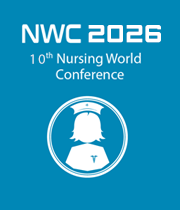Nursing education and Patient safety
Nursing education and Patient safety plays a pivotal role in shaping healthcare professionals who are not only skilled in clinical practice but also deeply committed to ensuring patient safety. In nursing curricula, an emphasis on evidence-based practices and the latest advancements equips future nurses with the knowledge and critical thinking skills necessary to navigate complex healthcare environments. Patient safety principles, including effective communication, error prevention, and vigilant monitoring, are integral components of nursing education programs. Simulation-based training offers students practical experiences in controlled environments, allowing them to hone their clinical judgment and decision-making skills without compromising patient safety. Continuous professional development ensures that practicing nurses stay abreast of evolving safety protocols and emerging healthcare technologies. Beyond technical competence, nursing education instills a culture of accountability and teamwork, emphasizing the collaborative nature of healthcare delivery. By integrating patient safety education into nursing programs, we cultivate a generation of healthcare professionals dedicated to upholding the highest standards of care and safeguarding the well-being of those they serve.



Title : The power of presence: Investing in LVNs for lasting impact
Emma Gitomer, Houston Methodist Hospital, United States
Title : Reaching our residents: An interdisciplinary approach to educating our future providers in the art of telephone triage
Cori Brown, Childrens Hospital of Philadelphia, United States
Title : Turn the heat around: Quality improvement in malignant hyperthermia response through in-situ simulation
Ayumi S Fielden, Houston Methodist Hospital, United States
Title : PTSD and tools for nursing resilience
Renee Bauer, Indiana State University, United States
Title : Birth partnerships: Enhancing nursing care with doula support
Vera Kevic, Doulas on Bikes, Canada
Title : Shift strong: A proactive stress-physiology framework for early identification of nurse distress
Laura Hall, Colorado Mesa University, United States